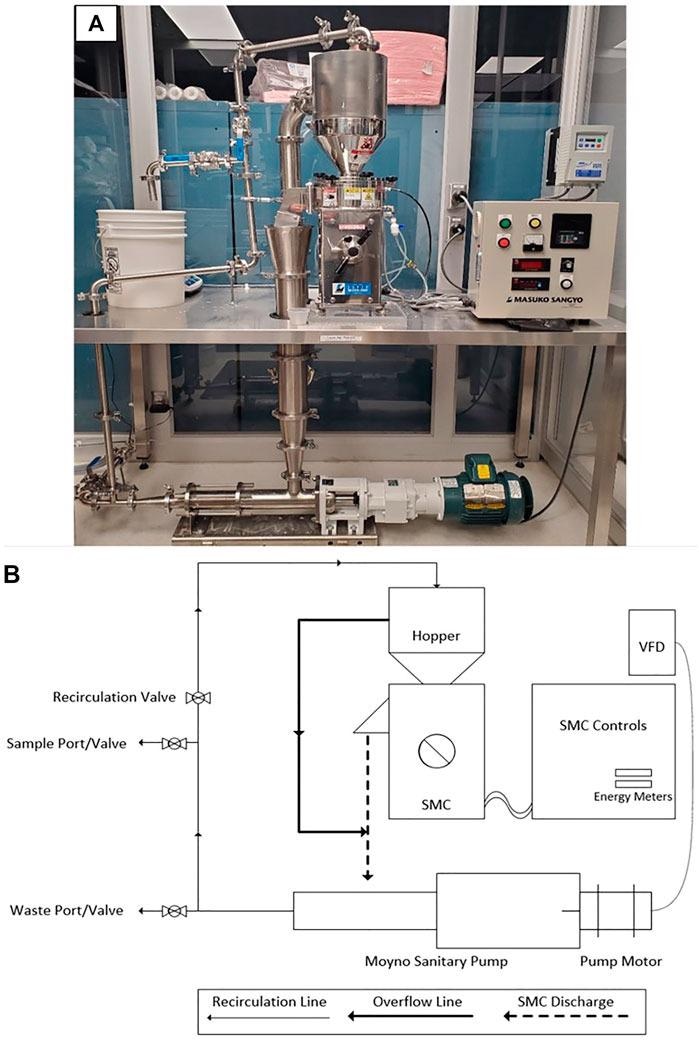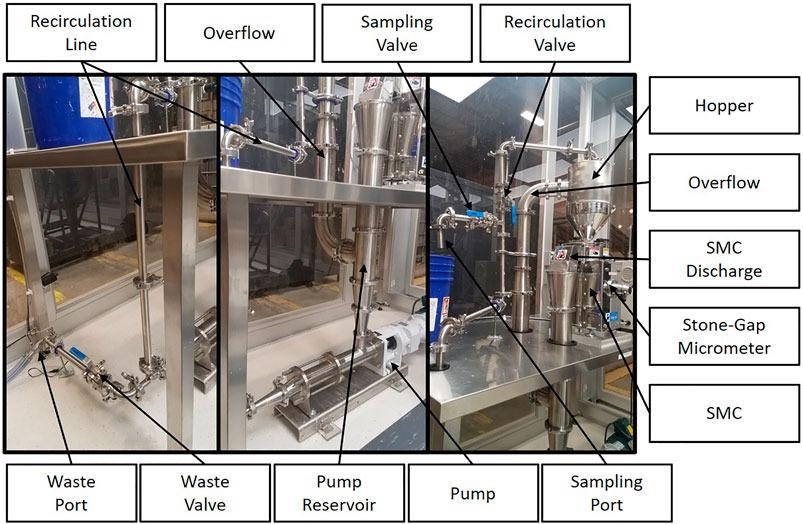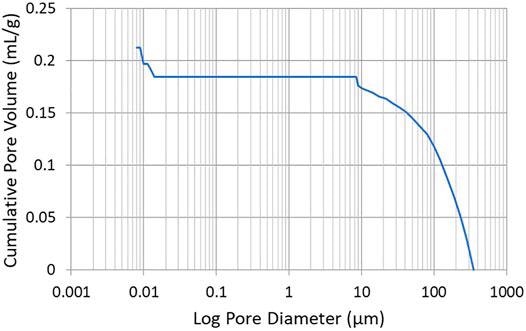A new breakthrough in cellulose nanofiber production (CNF) is reported in the journal Frontiers in Nanotechnology.

Study: Production and Characterization of Cellulose Nanofiber Slurries and Sheets for Biomedical ApplicationsImage Credit: Marco Lazzarini/Shutterstock.com
Cellulose nanoparticles are created using a variety of methods, including electrospinning, bacterial creation, acid digestion, and a range of mechanically defibrillation processes; the morphology of the nanomaterial generated is unique to the manufacturing process.
Feedstocks can range from various types of woody biomass to fungus and have a significant impact on the final output.

Supermasscolloider Refining System (A) SMC refining system and (B) schematic view. Image Credit: Carter, N., et al.
The electromechanical defibrillation methodology used in this research continually breaks down fibrous material suspended in water using segmentation and defibrillation via milling and refining.
Generally, the procedure is run until a suitable amount of fine is attained in the resulting slurry of cellulose nanofiber (CNF), also known as cellulose nanofibril. Mechanical defibrillation operations can be designed to generate a few liters in a small batch process or hundreds of tons per day in a continual pilot scale refiner system.
Cellulose Nanomaterials
Cellulosic nanomaterials are becoming increasingly popular in terms of innovation as well as pre-commercialization. The phrase "cellulose nanomaterial" encompasses a wide range of cellulose-based substances that have at least one dimension on the nanometer scale.
Cellulosic composites with crystalline and/or amorphous areas with fiber diameter less than 100 nm and fiber length less than or equal to several microns are commonly referred to by the name.
Sub-classification of cellulose nanoparticles is frequently undertaken based on the physical properties of the fibers, which are highly influenced by the manufacturing technique used.
There are four types of cellulose nanomaterials: cellulose nanofiber (CNF), cellulose nanocrystals (CNC), microbial nanocellulose, and electrospun nanocellulose.
Creating Cellulose Nanofibers (CNF)
Cellulose nanofibers (CNF), also known as cellulose nanofibrils, have diameters ranging from five to 30 nm and lengths varying from a few microns to several microns.
CNF is particularly associated with MFC, which has a slightly wider diameter, micrometer. Because it is a significant product of the paper industry, is chemically and morphologically consistent, and the bulk of the lignin has been extracted, bleached softwood kraft pulp is often utilized as a feedstock for the synthesis of CNF.
In CNF manufacturing, feedstock fiber is often degraded/defibrillated in a liquid medium, most commonly water, to produce a slurry. Shear is used in a variety of ways, including homogenization and microfluidization at extremely high pressures.
Under these conditions, cellulose concentrations are driven through small slits/chambers, exposing the fibers to enormous shear stresses that degrade the native hierarchical system.
Advantage of this CNF Manufacturing
The current study aimed to develop a CNF manufacturing plant that could: run in a continuous vs. batch system for best process performance; use a flexible refining system; use a commonly accessible and consistent feedstock, and produce a highly repeatable CNF slurry.
Furthermore, the system was designed to adhere to excellent manufacturing/good laboratory procedures, with standard operating procedures in place at all phases of production. After sterilization using a suitable procedure, the product can be used in biomedical applications.

Supermasscolloider refining system components. Image Credit: Carter, N., et al.
SMC Procedure to Create Cellulose nanofibers
The SMC procedure was started by opening the gap between refining stones (via the clearance adjustment) before turning on the drive engine. The system was then cleaned by running a large quantity of DI water through it; the framework was deemed clean while no fibers were observable in the waste stream.
The total energy usage of the SMC system's drive motor for the rotor (excluding recirculating pumping energy consumption) was found to be closely associated with the resulting cellulose fiber diameter and fiber distribution. As a result, required fiber distribution values were obtained by establishing a calibration curve using triplicate processing cycles and measuring fiber size/distribution and cumulative energy usage values.

Mercury Porosimetery Results. Pore volume analysis of a CNF sheet. Image Credit: Carter, N., et al.
Cellulose Nanofibers Pertinence
CNF sheets are naturally transparent, which is an important feature in many biomedical applications. Sheets of varied thickness were generated to determine the extent to which CNF sheet transparency could be regulated by altering the particle content of the slurry formed on the stainless steel plates and the height of the casting knife applicator.
It enables the manufacturing of CNF to result in a high-quality, reproducible material that can be sterilized before implantation or used for other animal and human applications. The current study used a continuous grinding mechanism to build such a production chain for CNF slurry.
Coatings and films, along with paints, sponges, and packaging, can all benefit from the use of cellulose nanofibers as a composite. Antibacterial films, super absorbent polymer, nonwoven materials, super water-absorbent substance, tissues, and absorbency structures are examples of CNF used in hygiene and absorbent materials.
Reference
Carter, N., et al. (2021) Production and Characterization of Cellulose Nanofiber Slurries and Sheets for Biomedical Applications. Front. Nanotechnol. Available at: https://www.degruyter.com/document/doi/10.1515/nanoph-2021-0661/html
Disclaimer: The views expressed here are those of the author expressed in their private capacity and do not necessarily represent the views of AZoM.com Limited T/A AZoNetwork the owner and operator of this website. This disclaimer forms part of the Terms and conditions of use of this website.